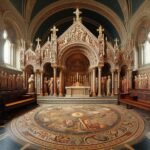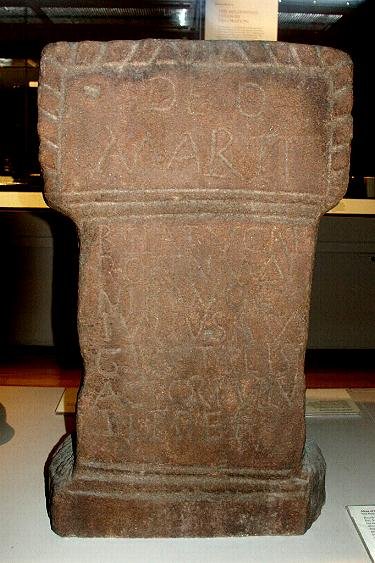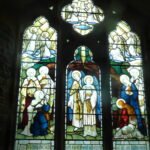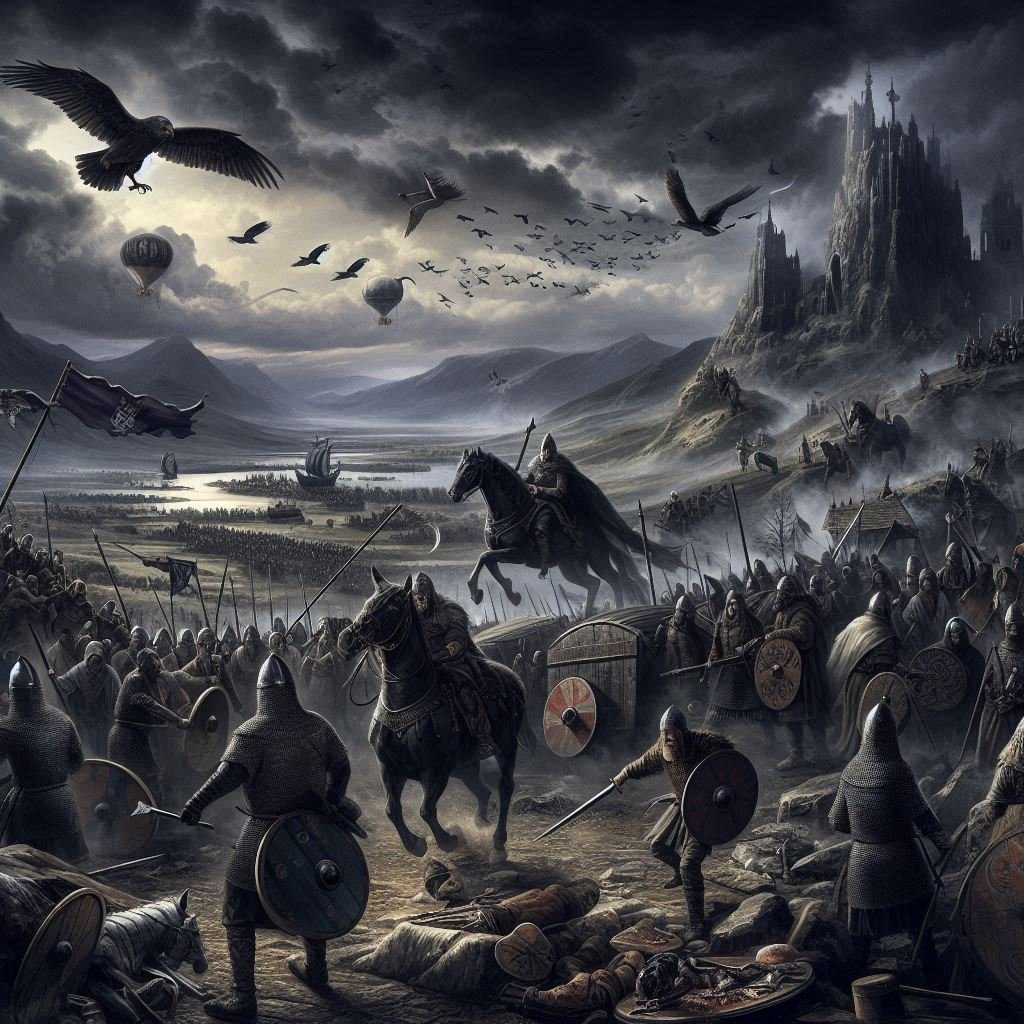The Premonstratensians, emerging in the early 12th century, represent a unique blend of monastic traditions and clerical duties. Founded by St. Norbert of Xanten in Prémontré, France, this order of canons regular adopted the Rule of St. Augustine but infused it with the rigorous asceticism reminiscent of the Cistercian way of life.
Contents
White Canons
The White Canons, as they were colloquially known due to their distinctive white habits, sought to harmonize the contemplative life with active ministry, thus bridging the gap between the cloistered devotion of monks and the pastoral engagement of secular clergy.
Their spiritual journey was deeply rooted in communal living and the shared pursuit of holiness through liturgical worship, manual labor, and scholarly study. The Premonstratensians were not just secluded contemplatives; they were also dynamic preachers and caretakers of souls, often found administering sacraments and providing guidance within parish communities close to their abbeys. This dual commitment to prayer and pastoral care was a hallmark of their order, reflecting a profound understanding of their role as intermediaries between the divine and the earthly realms.
Despite the serene settings of their abbeys, often nestled in tranquil countryside locations, the Premonstratensians were no strangers to the tumultuous events of the world. They played a significant role in the Christianization of pagan populations, particularly in regions around the Elbe and Oder rivers, and were instrumental in the cultural and spiritual development of these communities. Their influence extended throughout Europe, with a notable presence in Britain and Ireland, where they were established around the mid-12th century.
Rapid Expansion
The order’s expansion was rapid, and by the mid-14th century, there were over 1,300 monasteries for men and 400 for women, a testament to their appeal and the adaptability of their rule. However, like many religious orders, the Premonstratensians faced challenges and underwent periods of reform and relaxation. Over time, some of their practices evolved, leading to the formation of semi-independent congregations within the order, each interpreting the foundational rule in slightly different ways.
The dissolution of monasteries under Henry VIII in England marked a period of significant upheaval for the Premonstratensians, as it did for all monastic orders in the region. Yet, their legacy endured, and today, the order continues to thrive, adapting to the needs of contemporary society while remaining steadfast in their foundational charism of communio, or spiritual community. Their historical journey from the quietude of Prémontré to the diverse expressions of their ministry today speaks volumes about the enduring relevance of their spiritual mission and the timeless appeal of a life dedicated to faith, community, and service.
Liturgies
The Premonstratensians developed a distinctive liturgical rite that reflected their unique spiritual ethos and monastic discipline. Their liturgy was characterized by a blend of solemnity and celebration, deeply rooted in the traditions of the Western Church yet marked by particular customs that set them apart. The Missal used by the Premonstratensians was not arranged like the Roman Missal, signifying their desire to maintain a distinct identity within the broader ecclesiastical community. The canon of their Mass was nearly identical to the Roman rite, with minor variations, such as the timing of the sign of the cross during the “Libera nos” prayer.
The Divine Office, a central component of their daily spiritual rhythm, differed from the Roman Breviary in its calendar and the arrangement of psalms and readings. This divergence allowed them to emphasize saints and events significant to their order, such as the feasts of St. Norbert, their founder, and other Norbertine saints. The Premonstratensians also observed the Little Office of the Blessed Virgin, a series of prayers to Mary, which they recited immediately after the Divine Office, except on certain high feasts and during particular liturgical seasons.
Their liturgical year was punctuated by feasts unique to their tradition, celebrating the triumphs and commemorations of their order’s history and spirituality. For instance, the feast of the Triumph of St. Norbert over the sacramentarian heresy of Tanchelin was observed, highlighting their founder’s role in defending the doctrine of the Eucharist. The Translation of St. Norbert, marking the relocation of his relics, was another significant observance, reflecting their veneration for their spiritual patriarch.
The Premonstratensian rite placed a heavy emphasis on the paschal mystery, the suffering, death, and resurrection of Jesus Christ, which is the cornerstone of Christian faith. Their liturgical practices around Holy Week and the Easter octave were particularly solemn and elaborate, underscoring the central importance of these events in the Christian liturgical calendar. The expulsion of penitents and their reconciliation on Holy Thursday, as well as the jubilant celebration of the Easter octave, were carried out with great solemnity, embodying the redemptive narrative at the heart of their faith.
Despite the reforms and changes that occurred over the centuries, including those following the Second Vatican Council, the Premonstratensians have continued to preserve elements of their liturgical heritage. Their commitment to the liturgy as a means of sanctification and community building remains a defining characteristic of their order, bridging their illustrious past with their present-day ministry.
Liturgical Vestments
The Premonstratensians, with their distinct spiritual and liturgical traditions, had unique liturgical vestments that were emblematic of their order. Their attire was not only a symbol of their religious identity but also a reflection of their commitment to the austerity and simplicity of monastic life. The white habit of the Premonstratensians, from which they derived their name ‘White Canons,’ was a distinguishing feature, setting them apart from other orders. This habit typically included a white tunic, a white scapular, and a white rochet, which was worn during liturgical services.
In addition to their white habit, the Premonstratensians had specific vestments for the celebration of the Mass and other sacraments. The chasuble, the outermost liturgical vestment worn by priests and bishops during the Eucharistic service, was often simple and unadorned, adhering to their values of humility and poverty. However, on certain high feasts and solemn occasions, more ornate chasubles could be used, which might be decorated with symbolic embroidery or other adornments to reflect the significance of the event.
The alb, a long white linen tunic worn under the chasuble, was another key element of their liturgical dress. It was typically girded with a cincture, a type of belt, which could vary in colour according to the liturgical season or feast. The amice, a piece of cloth covering the shoulders, and the stole, a long band of fabric worn around the neck, were also integral to their vestments, each bearing specific symbolic meanings and often featuring the distinctive cross of the Premonstratensian order.
The mitre, worn by abbots and bishops of the order, was another distinctive vestment. While similar in shape to those used in the wider Roman Catholic tradition, Premonstratensian mitres were often less elaborate, reflecting the order’s emphasis on modesty. They might be adorned with simple embroidery or symbols pertinent to the order, such as the figure of St. Norbert or the Premonstratensian coat of arms.
The liturgical footwear, consisting of sandals and sometimes ceremonial shoes known as caligae, was also part of their vestment ensemble. These were usually made of leather and could be adorned with simple designs. The use of gloves and a ring, particularly by abbots and bishops during pontifical Masses, was another aspect of their liturgical attire, symbolizing purity and the authority of their office.
The Premonstratensians’ approach to liturgical vestments was a balance between their monastic vows and the need to honour the sacred mysteries they celebrated. While they embraced the simplicity and austerity of monastic life, they also recognized the importance of beauty and dignity in the worship of God.
Liturgical Colours
The Premonstratensians, like other liturgical traditions, employed a system of colours in their vestments that corresponded to the liturgical calendar, reflecting the tone and meaning of the various seasons and feasts. While the details of their colour usage are not as extensively documented as those of the Roman Rite, it is known that they adhered to a similar pattern of liturgical colours, with possible variations unique to their order.
The use of white, symbolizing purity and joy, was prominent in the Premonstratensian liturgy, not only because of their white habits but also during times of celebration such as Christmas and Easter, as well as for feasts of saints who were not martyrs. Red, the colour of blood and fire, would have been used on the feasts of martyrs, signifying their sacrifice, and on Pentecost, representing the Holy Spirit. Green, indicative of growth and life, was likely the colour for Ordinary Time, the period outside the major liturgical seasons.
Purple or violet, denoting penance and preparation, was probably worn during Advent and Lent, the two penitential seasons leading up to the celebrations of Christmas and Easter, respectively. It may also have been used for funerals and other sombre occasions. Blue, although less common in the Western Church, might have been used occasionally for Marian feasts, reflecting the traditional association of the colour with the Virgin Mary.
In addition to these primary colours, other hues such as rose may have been used on Gaudete Sunday in Advent and Laetare Sunday in Lent, offering a visual respite from the penitential purple with a hint of the joy to come. Black, traditionally worn for All Souls’ Day and Masses for the dead, represented mourning and the reality of death.
It is important to note that the Premonstratensians, while following the general Western liturgical tradition, may have had particular feasts and observances that called for specific colours not widely used elsewhere. For example, they might have had special vestments for the feast of St. Norbert, their founder, or for other saints and events significant to their order.
The liturgical colours used by the Premonstratensians would have been an integral part of their worship, serving as a visual catechism that reinforced the theological themes of the liturgical seasons and feasts.
Liturgical Music
The Premonstratensians cultivated a rich tradition of liturgical music that was integral to their spiritual and communal life. Their musical heritage, while sharing the foundational Gregorian chant common to Western Christianity, featured nuances and variations that reflected their unique identity. The music for their liturgy, particularly the Prefaces and other parts of the Mass, was distinct, though not radically different, from the Roman tradition. This subtle differentiation in melody and execution allowed them to express their specific spiritual emphasis and theological interpretations.
One of the notable aspects of Premonstratensian musical tradition was the use of two alleluias after the “Ite missa est” during the week following Easter, a practice that underscored their deep joy and reverence for the Resurrection. For the remainder of the Paschal season, one alleluia was maintained, signifying the sustained celebration of this central mystery of faith. Such practices highlight how the Premonstratensians wove their theological convictions into the very fabric of their liturgical expression.
The Divine Office, a cornerstone of their daily rhythm, was also marked by musical elements that were particular to the Premonstratensian Rite. The arrangement of psalms, antiphons, and readings was designed to accentuate the saints and events significant to the order, thereby creating a soundscape that was at once familiar and distinctively Norbertine. The feasts of their saints, such as St. Norbert and others, were celebrated with specific chants that honoured their memory and contributions to the order’s spiritual legacy.
The Norbertines’ commitment to liturgical music was not confined to the historical past; it continues to resonate in the present. For instance, the Norbertines of St. Michael’s Abbey in Orange County, California, have recorded and released CDs of their chant, which include selections from the propers of the Christmas Masses and other significant liturgical occasions. These recordings preserve their musical heritage and allow a wider audience to experience the beauty and solemnity of Premonstratensian chant.
The musical tradition of the Premonstratensians serves as a testament to their understanding of liturgy as a multisensory experience of divine worship. Through their chants and hymns, they sought to encapsulate the fullness of their theological vision and to facilitate a deep encounter with the sacred. The enduring appeal of their music, as evidenced by its continued performance and recording, speaks to the power of liturgical music to transcend time and place, connecting the faithful across generations to the timeless truths of the Christian faith.
Better known architectural remains in Brigantia
In Brigantia, the Premonstratensian order is renowned for several significant architectural contributions that have withstood the test of time, serving as historical testaments to their religious and cultural impact. One of the most notable structures is Egglestone Abbey, situated near Barnard Castle on the banks of the River Tees. Founded between 1168 and 1198, likely by a member of the Multon family, Egglestone Abbey is a prime example of the austere beauty characteristic of Premonstratensian architecture. Despite its history of poverty and challenges, including invasions and the Dissolution of the Monasteries, the ruins of Egglestone Abbey remain a poignant reminder of the order’s presence in the region.
In addition to Egglestone Abbey, the Premonstratensians established Easby Abbey in North Yorkshire. Easby Abbey, also known as the Abbey of St. Agatha, is nestled in the picturesque landscape near Richmond and the River Swale. It was founded in 1152 and, much like Egglestone, has endured through the centuries as a significant historical site, offering insights into the monastic life of the White Canons.
Mount Grace Priory, nestled beneath the Cleveland Hills, stands as one of the best-preserved Carthusian monasteries in England and reflects the influence of the Premonstratensians in its design and function. The priory was founded in 1398 and offers a glimpse into the austere life of the monks, with its individual cells and communal spaces designed for silent contemplation and prayer.
Another significant site is Newhouse Abbey, located in Lincolnshire, which was the first Premonstratensian establishment in England, founded in 1143. Although fewer remains of this abbey today, it is historically important as the starting point for the spread of the order throughout England. The abbey’s foundation marked the beginning of the Premonstratensians’ presence in the country, setting a precedent for the architectural and spiritual model that other abbeys would follow.
Lastly, the ruins of Cockersand Abbey in Lancashire, founded in the 12th century, offer another testament to the Premonstratensian architectural and religious legacy. Originally established as a hospital, it later became an abbey and thrived as a centre of religious life
These abbeys are characterized by their serene settings and the use of local stone in their construction, reflecting the Premonstratensian commitment to simplicity and harmony with nature. The architectural style of these buildings typically features elements of Romanesque and early Gothic design, with pointed arches and ribbed vaults that were innovative for their time. The layout of the abbeys would have included a church, cloister, chapter house, dormitory, and other essential monastic facilities, arranged to facilitate the order’s liturgical and communal activities.













